Mastitis in Pregnancy: Symptoms, Causes, and Treatment
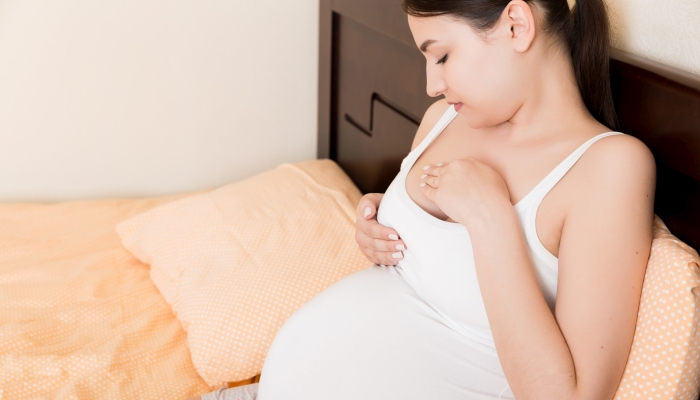
- Mastitis in pregnancy is a rare complication, usually occurring when milk starts to come in.
- Most mastitis happens when the breasts do not drain entirely during breastfeeding or pumping sessions.
- Symptoms of mastitis include flu-like symptoms, nipple discharge, and sore breasts.
- You can treat mastitis by using antibiotics, breastfeeding often, and taking over the counter painkillers.
Your body goes through a lot of changes while you are pregnant, and it can often be hard to determine what’s normal and what you should be concerned about.
If you’re experiencing breast pain during pregnancy, it can be caused by several different things, including mastitis. Although it’s rare, some women do experience mastitis during pregnancy, which may happen when the milk first starts to come in.
Is Mastitis Common in Pregnancy?
The Journal of Clinical Gynecology and Obstetrics states that mastitis is rare during pregnancy, but very common during lactation and breastfeeding. If you are breastfeeding while pregnant, your chances of mastitis increase significantly. If you have breast pain while you are pregnant and are not breastfeeding, you might want to look into other causes of your pain.
What Are the Symptoms of Mastitis During Pregnancy?
Symptoms of mastitis during pregnancy include flu like symptoms, breast lumps, sore breast tissue, and nipple discharge.
Sore Breasts
Breast pain is common during pregnancy. In fact, many women state that breast pain was their first clue that they were pregnant. A woman’s breast tissue can also feel full and sore when they begin lactating. Neither of these types of soreness are anything to be concerned about.
One clue to help you decide whether breast pain could be mastitis is if it’s the same in both breasts. Generally, mastitis only causes problems on one side and includes sore and cracked nipples.
Breast Lumps
If left untreated, mastitis can lead to an abscess formation on the affected breast. An abscess is a collection of pus that can feel like a lump or a breast mass. They often require fine needle aspiration or surgical drainage.
Any new breast lumps should be checked out by your physician. Breast lumps can be caused by cancers, swollen lymph nodes, and mastitis. Breast changes during pregnancy are common and usually caused by clogged milk ducts, but it’s good to have them looked at just in case it’s something more serious.
Redness
When you have mastitis, your skin will probably become red and warm on the affected breast. It will look like a bad sunburn or rash. A clinical examination of the breast tissue will help you tell the difference between mastitis and other types of rashes.
Nipple Discharge
Towards the end of your pregnancy, you may start to produce colostrum. This is normal and is the first form of breastmilk that your body makes. Colostrum is usually golden yellow and has a slightly sweet smell.
Nipple discharge from mastitis can look similar to colostrum, but may be either yellow or bloody. Your nipple will often be dry and cracked. If you are worried that your nipple discharge is abnormal, your doctor can help you tell the difference.
Flu-like Symptoms
Women with mastitis often complain of fevers, body aches, and fatigue. This is due to the inflammation and infection associated with mastitis.
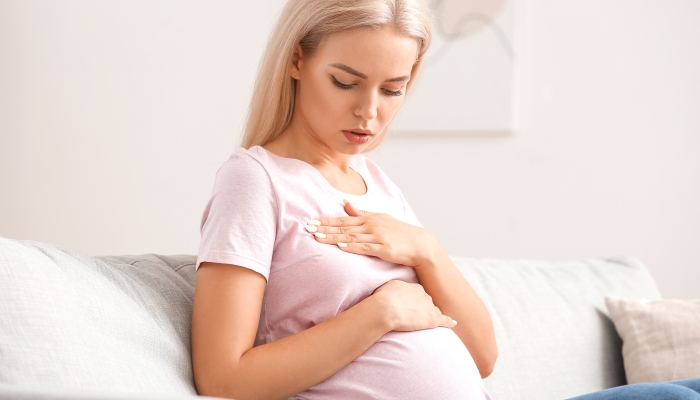
What Causes Mastitis in Pregnancy?
If you do experience mastitis in pregnancy, it will mostly start towards the end of your pregnancy, when you begin to produce milk. Mastitis is most common in lactating women, but it can happen to non breastfeeding women and men in rare cases.
Tight fitting clothing, cracked nipples, nipple piercings, and use of a breast pump to stimulate contractions might all lead to mastitis during pregnancy. When you begin lactating, mastitis can be caused by a clogged milk duct or if you do not fully drain your breasts when you express milk.
How is Mastitis in Pregnancy Treated
Mastitis is a painful condition that usually occurs in non pregnant women. Fortunately, mastitis that is caught early can be easily treated by your healthcare provider.
Express Milk
The best way you can treat mastitis at home is to make sure you completely empty your breast. Experts at the Mayo Clinic recommend breastfeeding or pumping on the affected side as often as possible and massaging the breast while you express milk.
You can also try to express milk during or immediately following a warm shower to increase milk flow. If you are pumping or hand expressing, try to continue massaging the breast for a minute or two after milk flow has stopped.
Antibiotics
Lactation mastitis will require antibiotic treatment for about 10 days. A literature review performed by the European Journal of Breast Health and written by Eve Boakes, Amy Woods, Natalie Johnson, PhD, and Naim Kadoglou, MD, showed that early antibiotic treatment of lactation mastitis helped women heal more quickly and avoid developing breast abscesses.
The most common antibiotic prescribed for mastitis is Cephalexin. Cephalexin, also known as Keflex, is safe for pregnant and lactating women.
Fine Needle Aspiration
If you develop a breast abscess, you may need surgical treatment or needle aspiration. These can usually be performed in your doctor’s office or an outpatient clinic, and you can go home and resume your normal activities that same day.
When to Seek Medical Attention
You can reach out to your medical provider any time you are worried. You will experience many changes during pregnancy and postpartum, and it’s not uncommon to have lots of questions.
Severe Pain
Any time you experience pain that interferes with your day-to-day activities, you should seek medical attention. If you notice localized pain or pain in one breast, you should have it looked at.
Rash
Any new rash should be assessed by a doctor. Many clinics will even allow you to have a rash looked at through telehealth, making it easy to decide whether you need to seek further treatment.
Breast Lumps
Breast lumps can be normal for pregnant and lactating mothers, but should always be looked at right away by a medical professional. Breast cancer often first appears as a lump, and successful treatment is much more likely if it’s caught early.
Any time you find breast lumps, or a palpable mass anywhere in your body, you should make an appointment with your medical provider.
Difficulty Breastfeeding
If you have trouble breastfeeding for any reason, make an appointment with a lactation consultant or physician. Poor latch and difficulty draining the breast can cause mastitis, and if you continue having trouble, it will continue to get worse or become recurrent episodes.
Fevers
If you have a high temperature, especially during pregnancy, you will need to seek treatment right away. Fevers can be dangerous for both you and your baby.
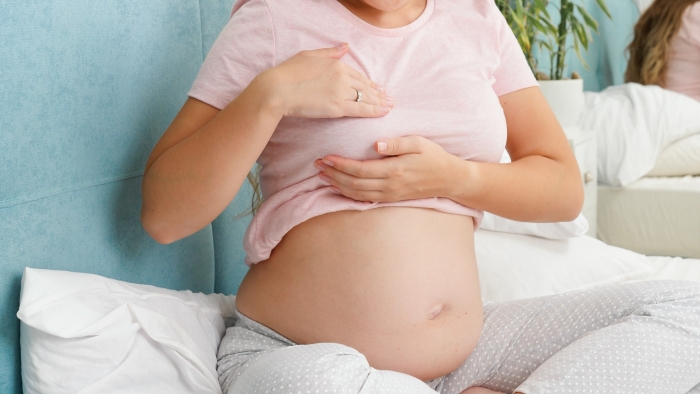
Other Causes of Breast Pain During Pregnancy
The breasts go through a lot of changes during pregnancy and while breastfeeding and there are many reasons you may have breast pain during pregnancy.
Pregnancy Associated Breast Disease
Pregnancy associated breast cancer is any breast cancer diagnosed during pregnancy or anytime one year postpartum. Research by the Journal of Clinical Gynecology & Obstetrics shows that with early treatment, women with pregnancy associated breast cancer have good survival rates.
Hormonal Changes
Changing hormones are responsible for breast tenderness at the beginning of pregnancy. Changes in estrogen and progesterone can cause soreness in the breasts both in early pregnancy and during menstruation.
Milk Production
Usually occurring right after giving birth, milk production can cause the breasts to become full and painful. Waiting too long between breastfeeding and pumping sessions can cause painful breasts. Women who choose not to breastfeed or who are weaning off of breastfeeding will probably experience painful breasts for several days while the breast tissue adjusts.
FAQs
Can mastitis in pregnancy leave scar marks on the breast?
While mastitis is uncomfortable, it does not cause any long-term damage to your breasts. Any rashes that develop should go away when the mastitis resolves. If you develop an abscess that needs surgical drainage, you may develop a small scar at the incision site.
Does mastitis during pregnancy affect breast milk supply?
Mastitis can affect milk supply because of inflammation. However, once the mastitis resolves, your breast milk production should return to normal. You can increase your supply and help prevent mastitis by pumping all remaining milk out of the breast after your baby finishes a breastfeeding session.
How long does mastitis in pregnancy last?
With antibiotics, most mastitis will clear up in about 10 days. Without treatment, mastitis can last up to three weeks, and if you develop an abscess it may last even longer. The best way to clear up mastitis quickly is to start antibiotics right away and breastfeed or pump as frequently as you can.
Can I still breastfeed with mastitis?
Breastfeeding with mastitis is safe and recommended. It will not hurt your baby if you continue to breastfeed with mastitis, and antibiotics used to treat mastitis are safe for pregnant and lactating women.
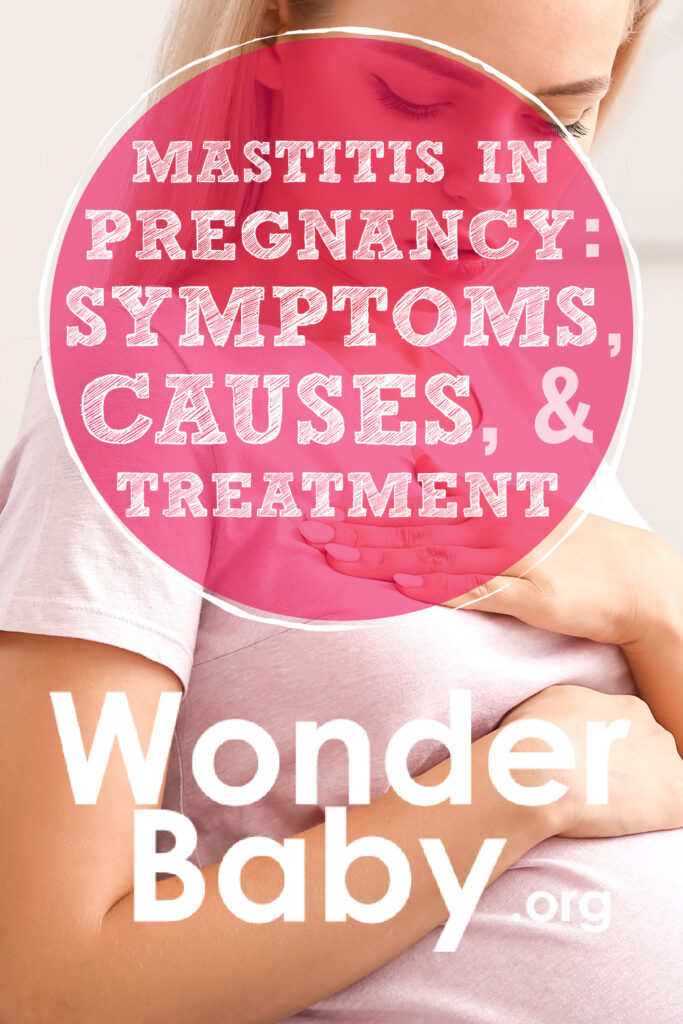
The information WonderBaby provides is not intended to be, and does not constitute, medical or other health advice or diagnosis and should not be used as such. Always consult with a qualified medical professional about your specific circumstances.
Related Posts
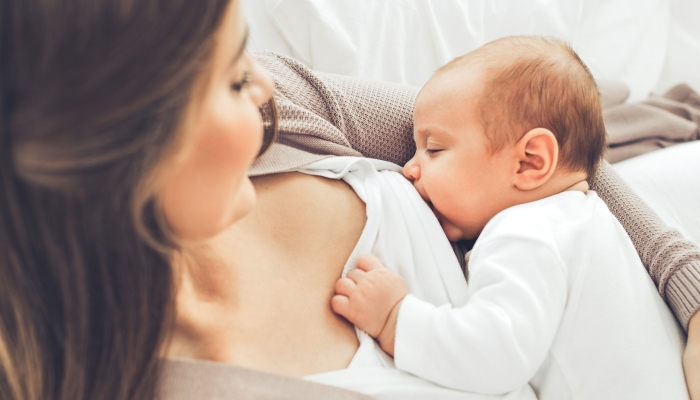
Breastfeeding, Sleep
Sleep and Breastfeeding: A Comprehensive Guide for Nursing Moms
Many people assume breastfeeding and sleep training don’t go together, but it is possible to help your baby sleep better while continuing your breastfeeding journey.
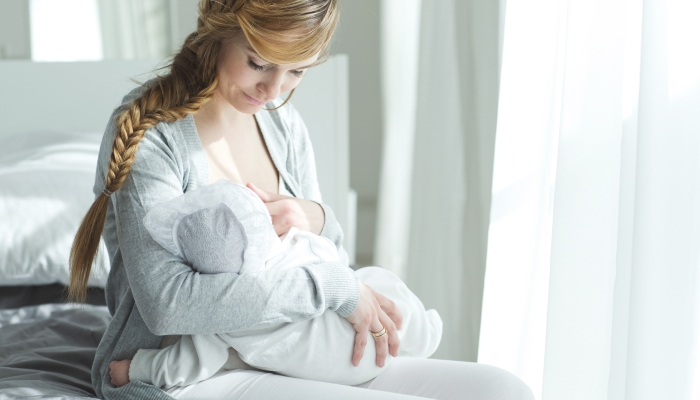
Breastfeeding
Comfort Nursing: Pros, Cons, and How to Stop
Find out what comfort nursing is, when should you worry about it, and how to stop or limit your baby's comfort nursing (especially at night!).
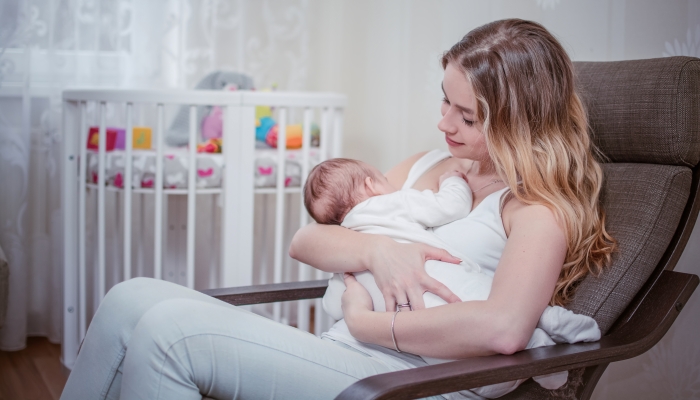
Breastfeeding, Product Reviews
5 Best Breastfeeding Chairs for Nursing Moms of 2023
Whether you want a gentle rock, a smooth glide, or a cozy cuddle to soothe your baby to sleep, you’ll have your pick of the best breastfeeding chairs on the...